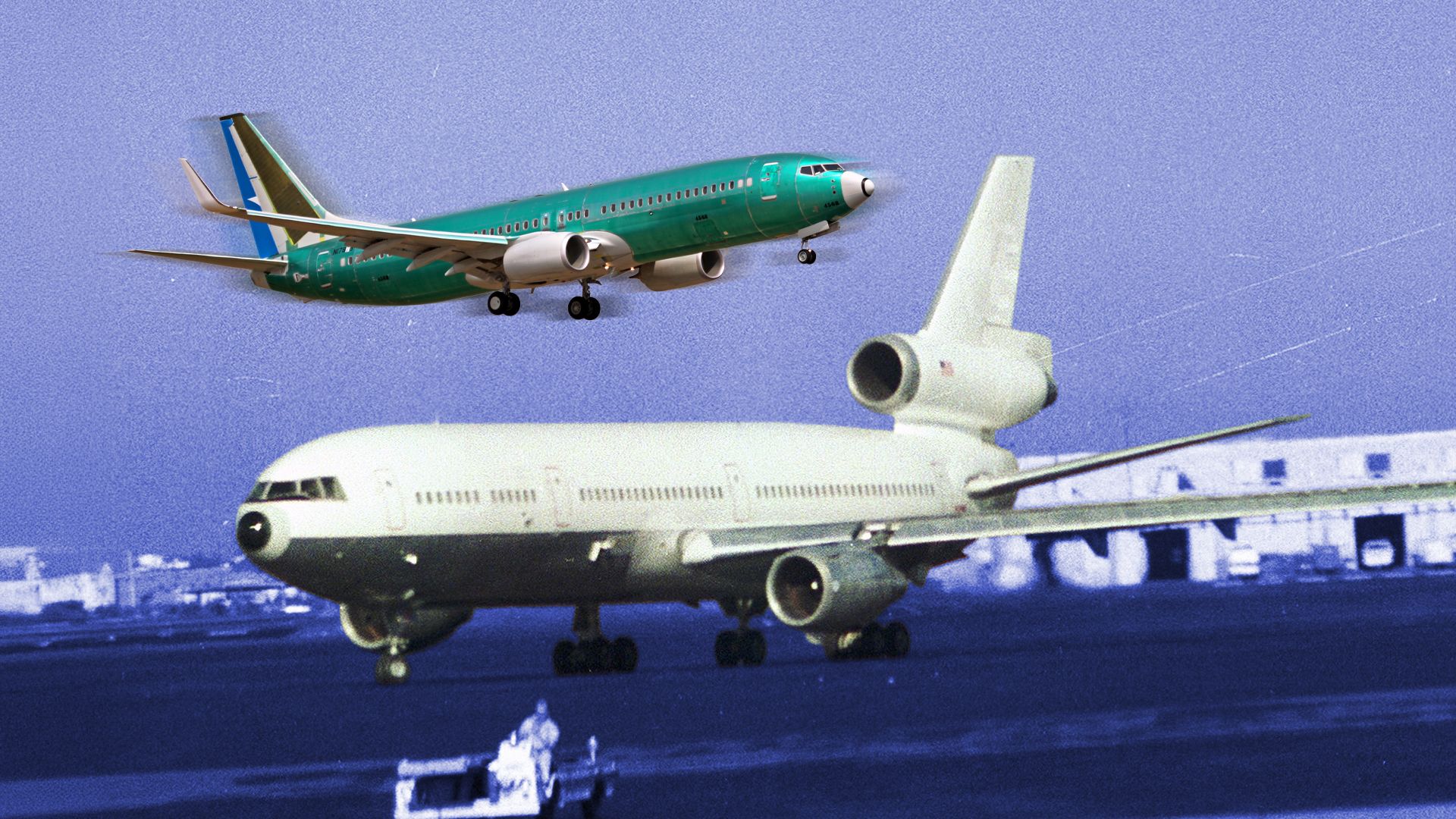World
Boeing’s Merger with McDonnell Douglas: A Costly Mistake Unfolds

Boeing’s merger with McDonnell Douglas in 1997 has been scrutinized as a pivotal moment in the aviation industry, with implications that continue to affect the company today. While Boeing was already the largest commercial aircraft manufacturer, the acquisition aimed to bolster its military capabilities and diversify its operations. However, analysts and industry insiders question whether this decision ultimately served Boeing’s long-term interests.
The origins of McDonnell Douglas trace back to 1921 when the Douglas Aircraft Company was established in Santa Monica, California. The company’s early successes included the iconic DC-3, which revolutionized air travel and became a symbol of the Golden Age of aviation. Despite initial hesitance to embrace jet technology, the company eventually produced the DC-8, which helped establish jet travel as the norm. However, by the time of the merger, McDonnell Douglas’s commercial aircraft division had struggled significantly, primarily due to poor sales of models such as the MD-11.
McDonnell Douglas: A Legacy of Innovation and Struggles
Despite its rich history, Douglas faced challenges in the late 20th century. The creation of McDonnell Douglas in 1967 brought together Douglas’s commercial expertise and McDonnell’s military prowess. The new company produced the DC-10, but competition and design flaws hindered profitability. Although the MD-80 found success, subsequent models like the MD-11 saw limited market traction.
Boeing entered the picture as McDonnell Douglas struggled with financial constraints and a lack of innovative commercial products. The merger was positioned as a strategy to enhance Boeing’s military portfolio, gaining access to McDonnell Douglas’s lucrative military contracts, which included successful aircraft like the F-15 Eagle and the F/A-18 Hornet.
The Impact of the Merger on Boeing’s Trajectory
Following the merger, Boeing discontinued the MD-11 and MD-90 product lines, rebranding the MD-95 as the Boeing 717-200. However, this model saw only 156 sales before production ceased in 2006. While Boeing continued to benefit from McDonnell Douglas’s military aircraft, the integration of the two companies introduced complications.
Boeing’s reputation for excellence began to falter after the merger. The introduction of the 787 Dreamliner was marred by delays and quality control issues, stemming partly from the decision to outsource many components to various suppliers across the globe. Although the Dreamliner was celebrated for its fuel efficiency and advanced technology, production problems plagued it for years.
In parallel, the development of the 737 MAX was also fraught with challenges. Under the leadership of CEO James McNerney, Boeing opted to upgrade the existing 737 rather than develop a new model. This decision, while financially motivated, resulted in design oversights that contributed to two tragic crashes in 2018 and 2019, leading to a worldwide grounding of the aircraft for nearly two years.
The fallout from these incidents has had lasting repercussions for Boeing’s reputation and market position. Analysts have noted that the merger’s legacy, particularly the influence of former McDonnell Douglas executives, has continued to shape decision-making at Boeing, often prioritizing short-term gains over long-term stability.
As Boeing seeks to navigate the complex landscape of modern aviation, the lessons learned from the McDonnell Douglas merger remain relevant. The company’s attempts to restore its image are complicated by a history of decisions that have led to significant operational challenges. Addressing these issues while rebuilding trust with customers and stakeholders will be crucial for Boeing as it moves forward in a highly competitive industry.
-

 Politics1 month ago
Politics1 month agoSecwepemc First Nation Seeks Aboriginal Title Over Kamloops Area
-

 World5 months ago
World5 months agoScientists Unearth Ancient Antarctic Ice to Unlock Climate Secrets
-

 Entertainment5 months ago
Entertainment5 months agoTrump and McCormick to Announce $70 Billion Energy Investments
-

 Lifestyle5 months ago
Lifestyle5 months agoTransLink Launches Food Truck Program to Boost Revenue in Vancouver
-

 Science5 months ago
Science5 months agoFour Astronauts Return to Earth After International Space Station Mission
-

 Lifestyle3 months ago
Lifestyle3 months agoManitoba’s Burger Champion Shines Again Amid Dining Innovations
-

 Technology4 months ago
Technology4 months agoApple Notes Enhances Functionality with Markdown Support in macOS 26
-

 Top Stories2 months ago
Top Stories2 months agoUrgent Update: Fatal Crash on Highway 99 Claims Life of Pitt Meadows Man
-

 Top Stories2 weeks ago
Top Stories2 weeks agoHomemade Houseboat ‘Neverlanding’ Captivates Lake Huron Voyagers
-

 Politics4 months ago
Politics4 months agoUkrainian Tennis Star Elina Svitolina Faces Death Threats Online
-

 Sports5 months ago
Sports5 months agoSearch Underway for Missing Hunter Amid Hokkaido Bear Emergency
-

 Politics5 months ago
Politics5 months agoCarney Engages First Nations Leaders at Development Law Summit





















